Late 19th century Buenos Aires teemed with immigrants from Europe and Africa, many of whom found themselves lonely and looking for companionship in their new home. These forlorn people found their way to the salons, seeking drinks to drown their sorrows, temporary friendship, and any entertainment to help ease their depression. The mix of cultures combined to bring about a new style of music, formed from African beats, Indian rhythms, Latin influences, and the popular music of the pampas (flatlands) in Argentina. This new music was dubbed Tango.
Some historians beleive that Tango gets its name from the African candombl drum beat known as "tan-go", while others argue that it is derived from Latin word tangere (to touch).
The dance that began as a pantomime of communication between prostitute and pimp was filled with emotions, sexual energy and suggestive gyrations. This choreography was accented by the melancholy drone of the bandoneon, a German instrument very similar to the accordion. In the early 1900s, a less vulgar form of tango was exported to France, where it was further refined and quickly gained popularity with the Parisian high society. Adding classy clothes, ballrooms, lyrics, and an orchestra, the Tango was revolutionized for the rich and became popular all over Europe, the USA, and was even embraced by the upper class of Argentina---the same people who once shunned its odious beginnings.
AMERICAN STYLE
A simplified version of the Tango, intended for mass consumption, was adapted by Arthur Murray. Although criticized by Tango enthusiasts for its lack of authenticity and charater, it was this version that introduced many Americans to the world of ballroom dancing. Before long, the American style Tango was being influenced by famous dancers of the stage and screen. It was this influence which contributed the most to its flamboyant and theatrical character.
The American Style Tango continues to evolve. Among those influences, the technical International (English) style Tango, the dramatic Paso Doble, and even the orginal Argentine style continue to contribute to its evolution. But American is still best known as both the simplest and the showiest of all Tangos.
Footwork: In Tango the feet pick up and place onto the floor, rather than gliding along in constant contact with the floor. The foot action is highly articulated, often being compared to the sneaking or stalking action of a cat. Forward walks are placed with the heel first, then flat. Backward walks are taken with a toe first, with the heel lowering as the body moves over it. At the same time, the toe of the forward foot should release from the floor as the body moves away. Side steps and chasses normally use a whole foot or ball-flat action.
Rise & Fall: There is no rise & fall action in Tango. The body level should remain constant throughout.
Contra Body Movement: Forward walks normally curve gradually to the left, therefore the left foot forward walk is taken with CBM, while the right foot forward walk is taken with a right side leading. Backward walks also normally curve gradually to the left, therefore the right foot backward walk is taken with CBM, while the left foot backward walk is taken with a left side leading.
Tango uses a modified dance hold, more compact than the normal closed position ballroom hold. The man and lady stand slightly farther offset, causing the man's right arm to be positioned farther around the lady's back so that the fingers of his right hand lay across her spine. Instead of placing her left arm on top of his, she will hook her forearm undernrath his elbow and upper arm. Her wrist will be positioned directly underneath his arm (possibly, but not necessarily in contact) with palm facing inward, her fingers just reaching his torso. The lady's right hand and man's left hand are joined in an upper-hand clasp at approximately the lady's eye level. The man's left and lady's right elbow may be held slightly higher than normal, with a more acute angle at the elbow.

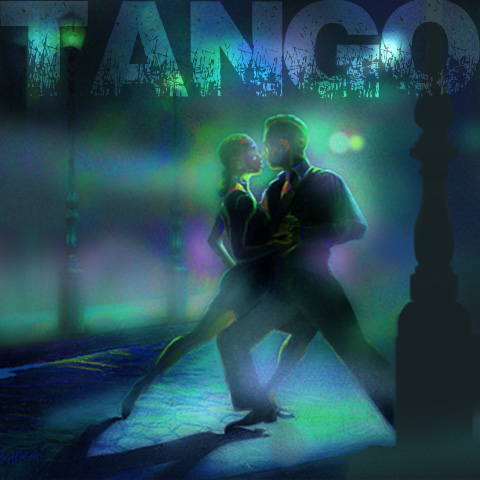
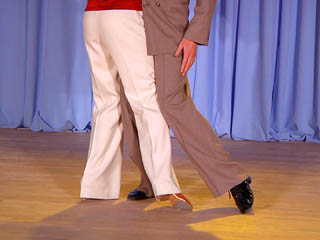 The Tango Close
The Tango Close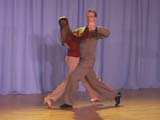 8-Count Basic
8-Count Basic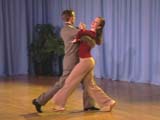 16-Count Basic
16-Count Basic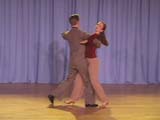 Progressive Rocks
Progressive Rocks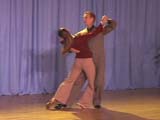 Basic Corte
Basic Corte